PINK CONNE ION

Issue 40: May - July ‘25


Marking a Milestone
Dr Raghu Ram enters Guinness World Records with breast cancer awareness


Issue 40: May - July ‘25


Dr Raghu Ram enters Guinness World Records with breast cancer awareness
WWe live in troubled times, and I am not talking of the wars and the untold suffering of innocent women and children they unleash. I am speaking about another disaster looming large—environmental degradation—which is pushing the world to the brink of a climate crisis.
In India, we are already grappling with pollution and excessive weather conditions which is causing famine or flooding. A water crisis is adding strain to an overburdened population in our cities.
That’s why I am moved by Nivedita Ganguly’s story on Jai Dhar Gupta and Vijay Dhasmana, who proactively created a unique biosphere from scratch in Uttarakhand.
“People living in Indian cities may be rich, but their quality of life is poor and deteriorating. I would like to improve living conditions and encourage rewilding to bypass living in polluted cities,” says Gupta.

Small measures like planting trees, shunning the use of plastic, opposing the cutting of forests to build more high-rise apartments can all go a long way to create a better world. We also need to curb excessive consumption that generates huge amounts of waste which is not always recyclable.
All it takes is one individual to change a mindset as these two gentlemen have shown. Our publisher, Dr Raghu Ram too has commendably poured time and resources to hold the world’s biggest breast cancer awareness programme and we admire him for his tireless efforts to nip breast cancer in its initial stages.
June is World Environment Day. Although not all of us can build biospheres, we can strive to live in tune with nature and improve the world around us and in the process, our own health.
Ratna Rao Shekar
CANCER CONQUEROR
Dr Raghu Ram secured two Guinness World Records in a span of 24 hours —this effort is a fitting tribute to his late mother, Dr Ushalakshmi, a breast cancer survivor 3 7 12 14 18
Dilshad Master’s story is an uplifting one as she made brave changes in her life after her tryst with cancer. Defying all odds, she is now organising treks to Everest Base Camp and Siachen glacier
MAKING A DIFFERENCE
An enterprising duo show the way to a life that is more in tune with nature and the wild. Meet the eco warriors who set up India’s first private biosphere in Uttarakhand
MY VIEW
Dr Raghu Ram’s column explores breast cancer diagnosis and treatment, offering insights into detection methods and treatment options
HERITAGE
The exhibition ‘Life in a Zenana’ in Udaipur demolishes the myth that royal ladies led cloistered lives. Instead, it shows their involvement in the state’s cultural and political affairs. They were the unsung heroines of Mewar
UBF DIARY



EDITOR
Ratna Rao Shekar
CONTRIBUTORS
Minal Khona
Mallik Thatipalli
Nivedita Choudhuri
DESIGN
Malvika Mehra
COPY EDITOR
Kavitha Shanmugam
PUBLISHED BY
Ushalakshmi Breast Cancer Foundation
PRINTED AT Pragati Offset Pvt Ltd., 17, Red Hills, Hyderabad - 500 004
KIMS-USHALAKSHMI
Centre for Breast Diseases
Krishna Institute of Medical Sciences, Minister Road, Secunderabad - 500 003
+91-91009 13217
ubfhyderabad@gmail.com

www.breastcancerindia.org https://www.youtube.com/c/UshalakshmiBreastCancerFoundation
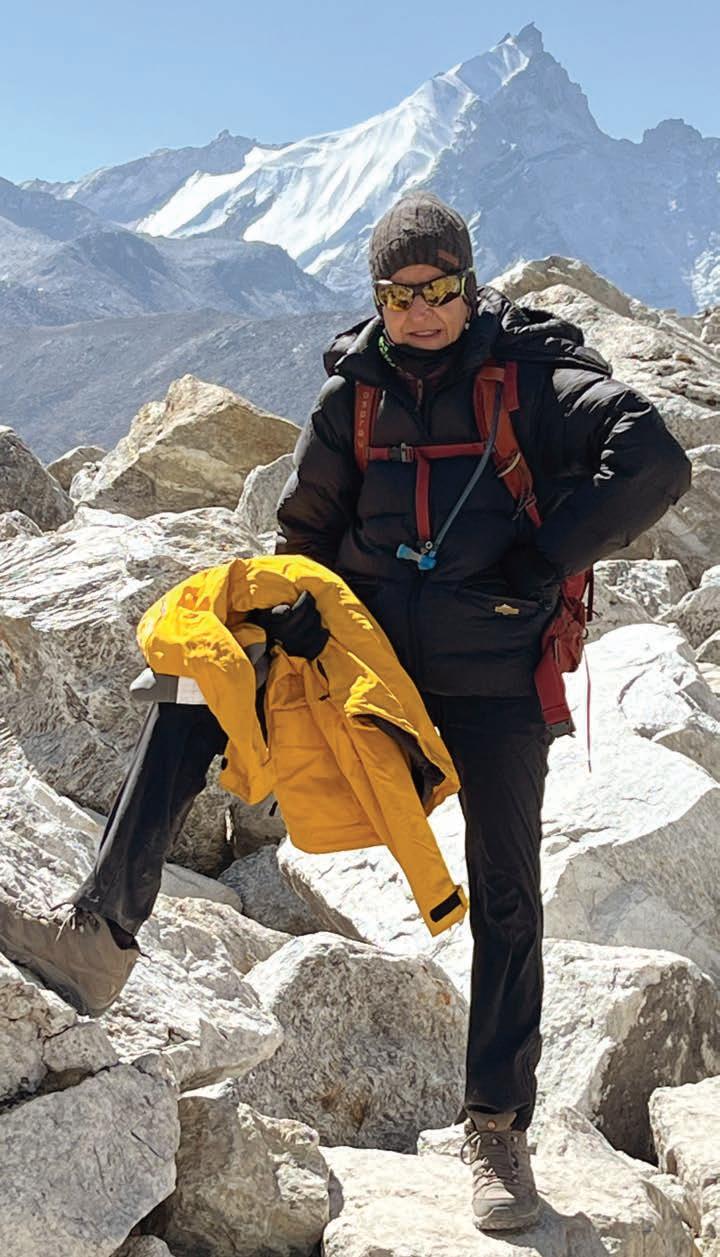
She had a highly stressful job as a corporate head honcho. But after her battle with cancer, Dilshad Master gave up her career in the media, and joined her husband’s trekking company, which organises treks to Everest Base Camp and Siachen glacier. She made lifestyle changes and learnt to deal with cruel curveballs life threw at her.
Minal Khona speaks to the courageous cancer conqueror
Dilshad Master had spent over 21 years in the television industry—holding several top positions in big companies like Star TV, National Geographic Channel and UTV to name a few.
A sixteen-hour job consuming ten cups of tea a day; stress, and a fastpaced lifestyle meant the annual checks for cancer passed her by. And she had a family history of cancer to reckon with too.
In an chat with Pink, the dynamic and purpose-driven Himalayan trek organiser recalls, “My father’s mother and sister, my mother’s sister and brother—all had cancer at some stage. Yet, I never got a mammogram done. At the hospital in Mumbai, the first thing the doctor said to me was this —what part of your family history did you not understand?”
‘I didn’t believe it will happen to me’
In February 2012, when Dilshad was 45, she felt a small lump in her right breast.
It was “infinitesimally small” and she ignored it for eight months. Then she mentioned it to a dear friend who went ballistic and insisted she get a mammogram.
“The result showed nothing and as we were walking out of the hospital, I called my mother’s sister who is a histopathologist in the US. She asked me to get an ultrasound done. I went back in and asked for an ultrasound. After it was over, I figured something was wrong because many doctors walked in and out and finally, a senior doctor walked in,” she says.
I felt stupid to have thought that cancer would pass me by, given my family history.
Like so many other survivors, I didn’t believe it would happen to me
He told her that it looked like a lump. A core needle biopsy of the lump under ultrasound guidance confirmed the diagnosis of carcinoma, grade two. Later, at the hospital, waiting for the oncologist, she started googling the terms mentioned in the report because she was only familiar with the word ‘carcinoma’.
“The rest was all gobbledygook. The doctor called me inside and said there was nothing to worry about, it was grade-two cancer. Four days later, all the staging tests were done and the protocol would include six rounds of chemo and 30 rounds of radiation therapy,” she recounts.
“It felt like an overload of information. I felt stupid to have thought that cancer would pass me by, given my family history. Like so many other survivors, I didn’t believe it would happen to me,” she shares.
A hitch
Since Dilshad and her family lived in Delhi at that time, she decided to go ahead with the surgery in the capital. But it turned out to be unsuccessful because she describes the operation as being “incomplete”.
Dilshad explains, “A close friend’s sister is a famous oncologist. I had sent the reports to her and her feedback was that there was not enough of a margin left after the lumpectomy and the lymph nodes in the armpit (axilla) were not sampled.”
Her aunt, the histopathologist from the US, also told her that it was incomplete. This time she went to a prominent hospital in Mumbai.


The doctor looked at the post-surgery reports and said he would remove a few lymph nodes from the arm pit (Sentinel Node Biopsy) and if there is cancer in these nodes, he would operate further and remove all the nodes. He removed (excised) additional margins from around the tumour site in the breast and a few lymph nodes from the armpit.They were all clear.
He also changed the protocol since it was a small tubular carcinoma (which has good prognosis) and made it 30 sessions of radiation therapy and said there was no need for chemotherapy.
The turnaround
Dilshad opted to return to Delhi for radiation therapy because her daughter was still a toddler then. Her chief radiologist from Mumbai, however, was in regular contact with her attending radiologist in Delhi.
“I had to go for radiation for five days a week, for six weeks. My husband Akshay would accompany me initially, but I decided to go alone soon after. I would take the early morning 6.30 am appointment and it would be over in a short time,” she recalls.
The side effects of radiation, however hit her and she became unlike her usual confident, positive self. Dilshad lost weight and by the third week, there was discolouration at the radiation site.
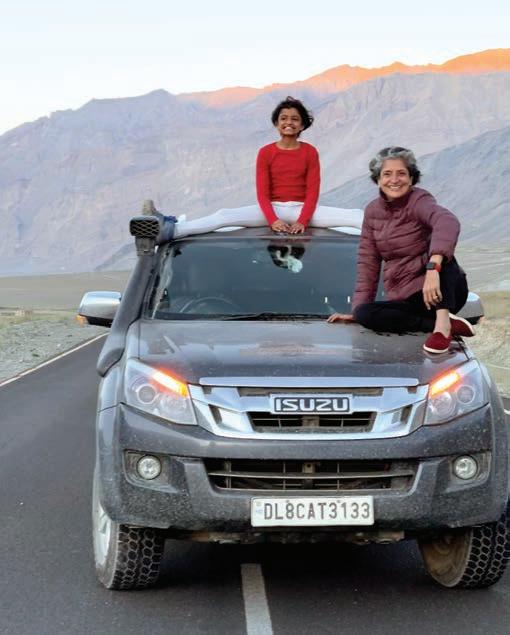


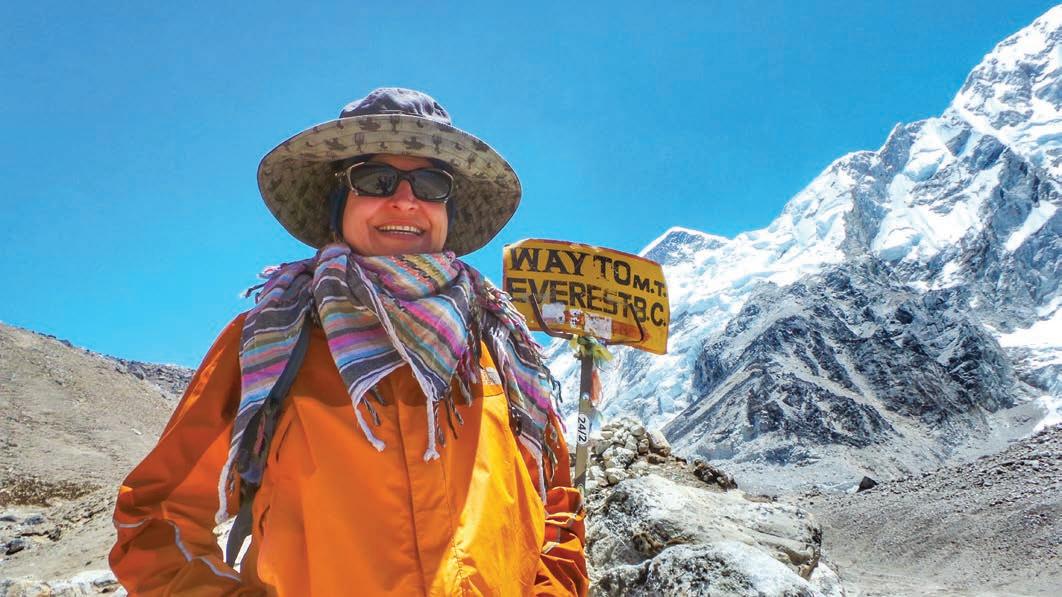
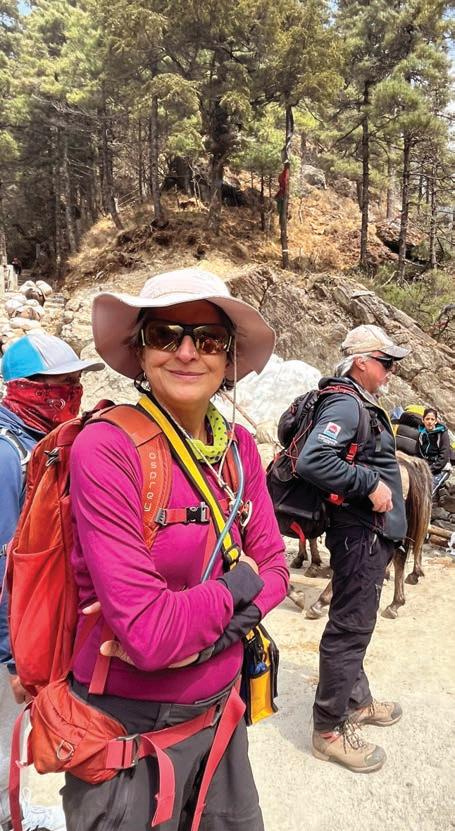

“I became tired and weepy and was full of self-pity. I had lost eight kilos and by the third week, my skin colour changed. It looked charred and burnt. I could only wear mulmul kurtas as my skin felt it was on fire,” she recounts.
The Tamoxifen she had to take as medicine also led to insomnia as a side effect and she barely slept for three to four hours every night.
What I got was lots of empathy and positivity from my husband, mother-in-law and mother, which is what people need at this time. This practical, nofuss approach was the best part – it helped me bounce back
and positivity
Her mother could not be with her after her first surgery, so it was her husband Akshay and mother-in-law who gave her all the support she needed at that time.
She reminisces, “They ensured my baby was looked after. And between my mother, and them, I got no sympathy. What I got instead was lots of empathy and positivity which is what people need at this time. This practical, no-fuss approach was the best part—it helped me bounce back.” She adds that her husband didn’t panic at the news or if he did, he did not reveal his fears to her, which also helped.
To recover and regain her energy levels back, Dilshad connected with a dietitian in Mumbai, who put her on a diet of raw vegetables for breakfast, lunch, and dinner.



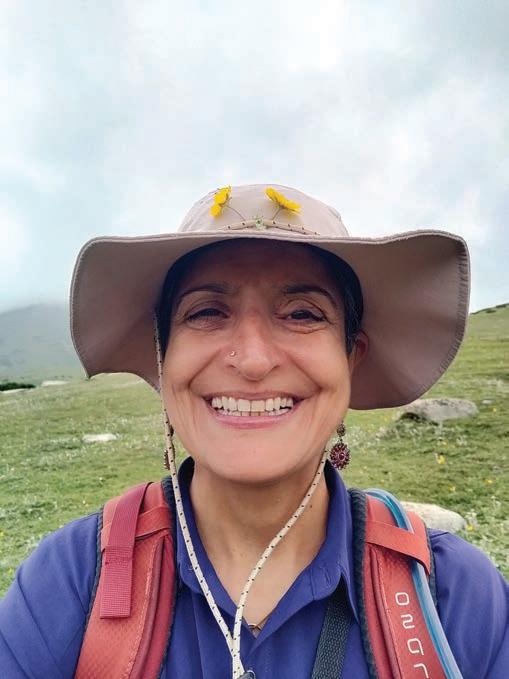
“I was only allowed a little salt and lemon juice on the salad, but no dressing. I could also eat a piece of chicken or fish and drink watermelon juice and lemon barley water. This diet worked for me; my skin was glowing and I felt good. The weepiness disappeared and I sailed through the radiation therapy,” she says.
I tell other cancer survivors that it is not the end of the world and that they should move forward. I learnt to ski at 50, when my daughter was five. Nothing is impossible, you can do anything you put your mind to!
someday. Since her husband ran a company that did exactly this—trekking to Everest base camp, she decided she wanted to go on the next one.
“The trek was in May 2014. My husband helped me train and I started walking. Luckily, just before the cancer, the universe had worked itself out for me and I had reduced the 16-hour days. Looking back, I strongly believe that two decades of high-stress jobs probably led to the cancer,” she confesses.
She joined her husband’s adventure travel business, Mercury Himalayan Explorations.
Lifestyle changes
It was a steep learning curve for her, given that television was her passion and core expertise. On the personal front too, the cancer and the work enabled her to change her lifestyle.
She says, “Like a good Parsi, vegetables were always the third dish on the plate. Now, I have them raw or stir-fried every day, I drink three litres of water and only have one cup of tea a day. I have also completely cut sugar out of my diet. No maida, no cookies and no pasta. I stick to chicken breast, rice and dal or rajma and occasionally some millets and only have a small piece of chikki on a trek if I need to.”
Fighting back
But her ordeal was far from over. In 2020, her husband passed away suddenly due to a heart attack. Before his death, they had started a new company called Bull’s Adventures, named after her father-in-law, Colonel Narinder ‘Bull’ Kumar, the first Indian to hoist the Indian flag on the Siachen Glacier.
However, Dilshad took over the running of the company and today successfully conducts treks across Kashmir, Himachal and Nepal, including to the Everest Base Camp.
She is the first Indian to lead a civilian trek to Siachen glacier in 2016. She sits on the board of Outward Bound India Himalaya, which is an international organisation working with children, professionals and other young people, to empower them with life skills through experiential training in the outdoors.
The idea is to motivate people to travel in the wilderness and get out of their comfort zones. She is also a TEDx speaker and has given talks about her cancer. When friends refer other cancer survivors to her, she helps them as much as she can.
Climb every mountain
After two months, her darkened skin also regained its normal colour.
During her stint with National Geographic Channel, she had seen a documentary on Mount Everest and Dilshad had always harboured a dream to do the trek to the base camp


Her mantra: “I tell them that it is not the end of the world and that they should move forward. I learnt to ski at 50, when my daughter was five. Nothing is impossible, you can do anything you put your mind to!”


To prove to people they can breathe cleaner air away from polluted cities and better their living conditions, Jai Dhar Gupta and Vijay Dhasmana took the initiative to create a unique private biosphere at Uttarakhand, which borders a tiger reserve, and grow only what naturally thrives in that area.
Nivedita Choudhuri talks to the eco champions about their forest project, which
Imagine a leopard strolling by as you wake up to a hot steaming mug of morning coffee amid the green tranquil setting of nature and clean air. Or, better still, what if the surprisingly affable leopard rubs its back against your legs like a domestic kitten while you are sipping that coffee.
These are some of the treasured and unforgettable moments eco-entrepreneur Jai Dhar Gupta and ecologist
Vijay Dhasmana get to experience at their 35-acre private forest, which they have developed from scratch. Known as the Rajaji Raghati Biosphere (RRB), it is India’s first private biosphere strategically bordering a tiger reserve.
While many sit around complaining about pollution in crowded cities and the inability to savour the joys of

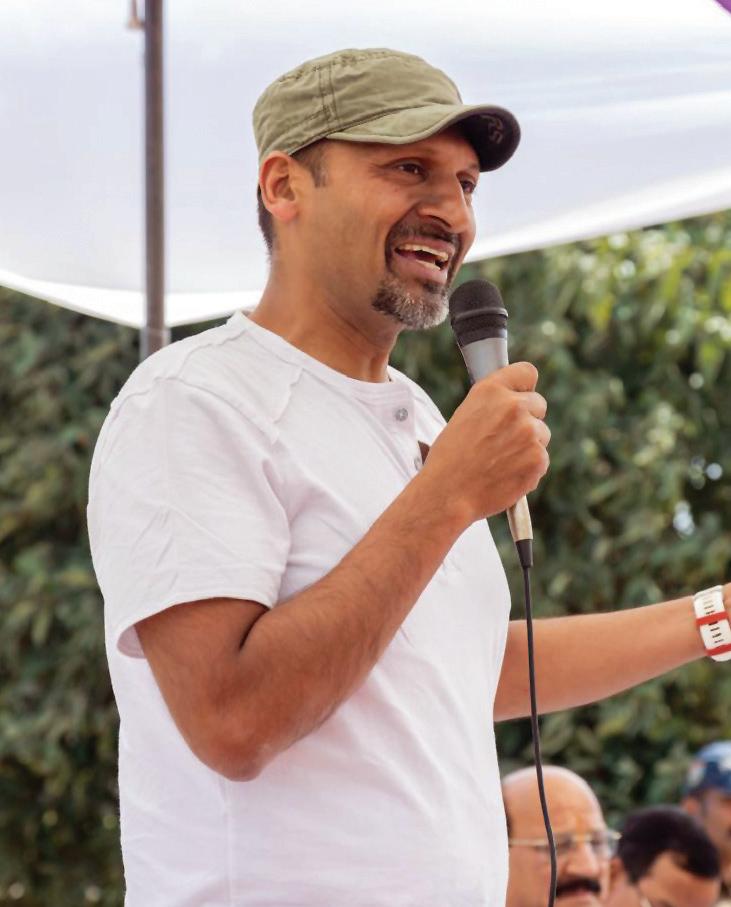
They converted a barren land into a thriving forest area brimming with biodiversity, growing only what is indigenous to the area.
Clean air activist
Explaining what motivated him to take up this challenge, Gupta says he had spent his formative years in the polluted metropolis of Delhi. He belonged to a business family and went on to earn a degree in environmental sciences at Wharton – the renowned business school in Philadelphia, USA.
But always drawn to nature, he became a passionate clean air activist after he developed bronchial asthma in 2013. He was ‘seized with a zeal’ to work towards reversing air pollution and restoring the natural ecosystem to ensure cities breathe easy. He had even met the then Delhi chief minister, Arvind Kejriwal to start an air pollution task force for the country’s capital and became part of an air pollution think tank, which

was responsible for kickstarting the odd-even scheme for vehicles.
According to Gupta, the pollution crisis in Delhi is so grave that residents are literally dying with every breath.
“Awareness precedes change and after Covid I realised that pollution had just become a vote bank issue and reversing air pollution in Delhi in my lifetime is not achievable. It’s then I realised the need for creating a biosphere or an ecosystem, which can act as a carbon sink,” he recounts.
Rewilding initiative
Gupta then contacted rewilding expert Vijay Dhasmana, who has done wonderful work in this area by setting up the 380acre Aravalli Biodiversity Park in Gurgaon. They scouted for an area to create a biosphere and zeroed in on a 35-acre piece of barren land abutting the Rajaji Tiger Reserve along the foothills of the striking Shivalik range in Uttarakhand.
“Our aim is to create a clean environment and grow only what nature intended in that area,” says Gupta.
The Rajaji Raghati Biosphere (RRB) is a rewilding and coexistence initiative. The site shares its boundary with the tiger reserve on the north-eastern side, Raghati river on the east and agricultural lands on the remaining sides. Their vision is to bring in a slice of Rajaji Tiger Reserve’s mixed deciduous forest and its rich biodiversity into their land.
The Rajaji Tiger Reserve has a rich forest ecosystem and can be grouped broadly into six types: sal forest, mixed forest, riverine forest, scrubland, grassland, and sub-tropical pine
Rajaji Raghati Biosphere is India’s first private biosphere strategically bordering a tiger reserve. Gupta and Dhasmana’s aim is to create a pure environment and grow only what nature intended to in that area
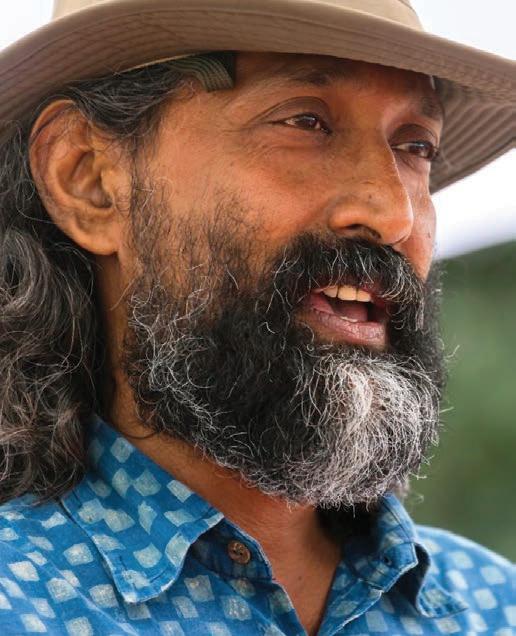

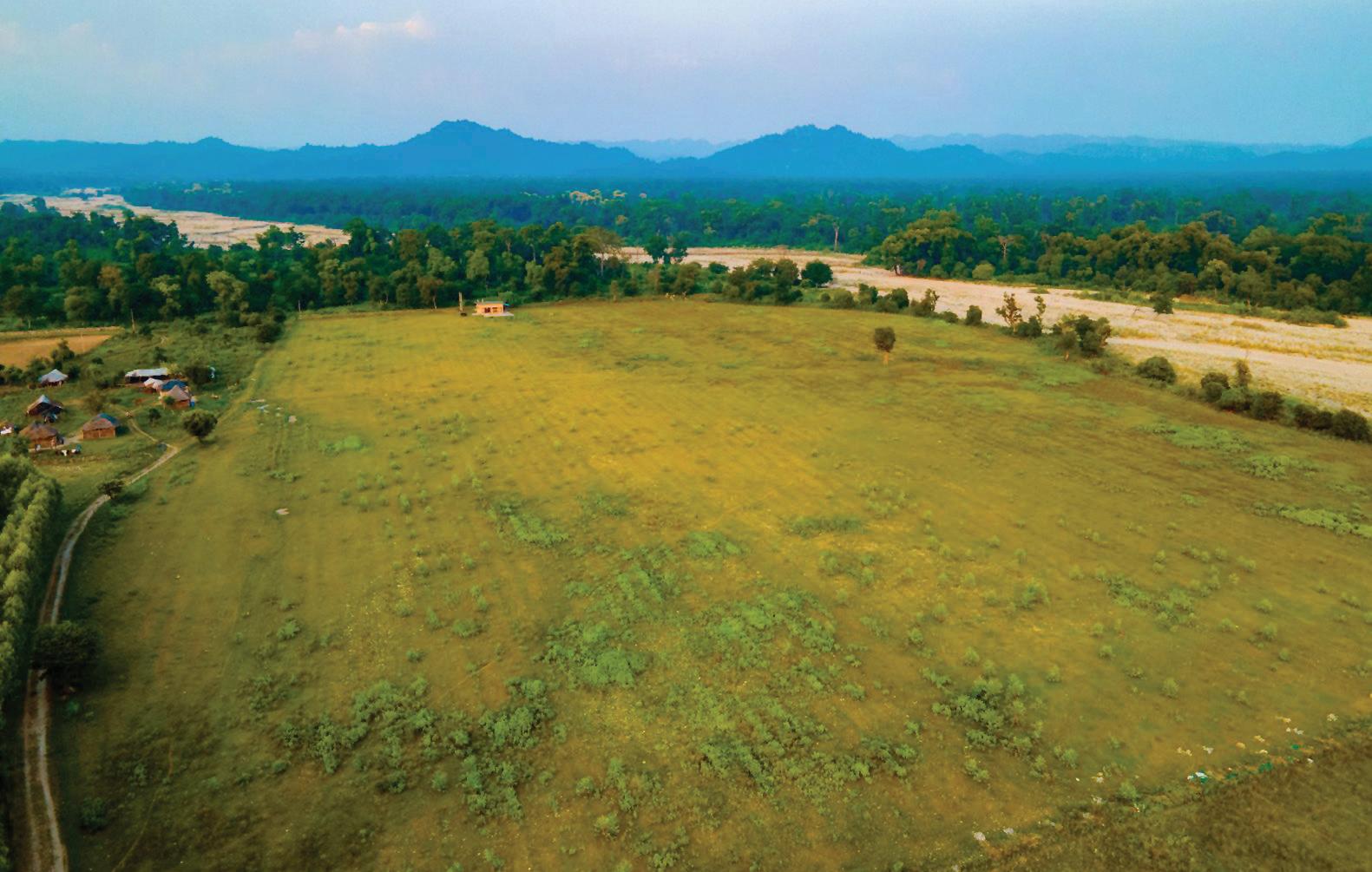
When they first surveyed the land it was largely devoid of natural vegetation. The soil was poor and lacked good physical texture and microbial life. Dhasmana and Gupta began by recreating the natural contours of the land
forest. The enterprising duo’s aim was to introduce similar natural elements into their private biosphere and they started planting selected trees, shrubs, and climbers and then herbaceous plants and grasses.
Planting a forest
However, they did not plant just any tree. They conducted extensive surveys on the site, and identified 62 species of trees that were on the verge of extinction. They got 2 kgs of seeds per plant, created a seed bank, collaborated with biodiversity parks to germinate seeds, and grew the saplings of trees such as rohini, jamun, and haldu.
Till now, around 4,500 trees, shrubs and grasses have been planted in the biosphere since the inception of the project in 2022. Drone surveys are done on a quarterly basis to see how the trees are faring.
“This is a science project of sorts involving ecological succession at the end of the day,” points out Gupta.Ecological succession is the gradual and predictable change in the species composition of an area over time.
Challenges
Reminiscing about their initial challenges, Dhasmana says that when they surveyed the land in the beginning it was largely devoid of natural vegetation because it had been cultivated for decades. “Due to irrigation, the soil was poor and devoid of good physical texture and microbial life,” he says.
After the grasses and shrubs sprouted, the insects and birds have come in droves as have rabbits and rodents. The leaves are like candy for the deer. Our small initiative has proved that rewilding and co-existence can be compatible.
It takes around 20 years to build a forest. We just have to contribute 1 per cent and nudge nature in a certain direction. Nature will do the remaining 99 per cent of the work. The carbon footprint at Rajaji Rajghati Biosphere is ridiculously low, says Gupta
the natural contours of the land to ensure that the topsoil was not lost,” adds Gupta.
Another problem was to remove the non-native species of trees. “Agroforestry, using non-native eucalyptus trees, had been practised on the site. The eucalyptus trees dried the groundwater. It broke my heart but within five days of acquiring the land we chopped down 5,000 eucalyptus trees,” explains Gupta.
They were clear that they did not want to retain any of the invasive and non-native species of plants, including varieties such as Congress grass and lantana that are harmful and dangerous to nature.
Today, what’s amazing is that their rewilding efforts are attracting all kinds of wildlife into their land. “This area is populated by leopards, elephants, bears, sambar deer, nilgais, chital, dhole, jackals and porcupines among others. In fact, the Rajaji National Park is home to one of the largest elephant populations in India,” shares Dhasmana.
“After the grasses and shrubs sprouted, the insects and birds have come in droves as have rabbits and rodents. The leaves are like candy for the deer. Our small initiative has proved that rewilding and co-existence can be compatible,” asserts Gupta.
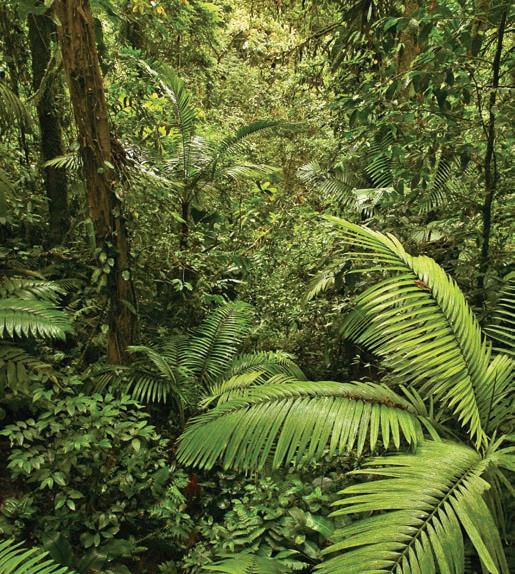
It had been flattened and levelled for the purpose of agriculture. “But, natural land is never flat,” points out Dhasmana.
“We first saw the land during the monsoon season, and it was absolutely nightmarish. Some land was sloping towards the river, taking the topsoil into the Raghati. We had to recreate
Is he ever worried about safety because of the wild animals roaming around? Gupta replies: “Our problems stem not so much from wild animals as they do from humans and livestock. Humans come only to steal, and livestock follow suit. Honestly, wild animals have given me a lot more than they have taken away. When a leopard kills, it is a sight to behold. Birds with wingspans of 10 feet will swoop down to feast on the remains and the howling jackals and hyenas will follow. It is a symphony in the wild and a safari movie show at the same time.”
To build a forest
“It takes around 20 years to build a forest. We just have to contribute 1 per cent and nudge nature in a certain direction. Nature will do the remaining 99 per cent of the work. The carbon footprint at RRB is ridiculously low. We just do the opposite of what farmers do. We don’t use chemicals and no plants are allowed here except for native species. There are no combustion vehicles or pets and cigarettes are strictly prohibited. We drink mountain spring water, which is easily available since RRB is located at the foothills of the Shivaliks. We irrigate the trees with river water. To put it bluntly, life here is pure and simple,” declares Gupta.
“I commute from Delhi regularly, but I don’t live at RRB. I have filed an application to build a few homes, but I want to keep things simple. I would like to invite superspecialists— experts in soil restoration, beekeeping, fungi—UN officials and documentary filmmakers—to visit the biosphere, work with us and share their expertise with us,” says Gupta.
So, what are they hoping to change? Gupta, who returned to India from San Francisco in 2010, is quick with an answer.

“People living in Indian cities may be rich, but their quality of life is poor and deteriorating day by day. I would like to improve living conditions and encourage rewilding as a way to bypass living in polluted cities. I am a man with limited means. If I can show people that there’s another way to lead a more meaningful life—because anyone can do it—and go back to the basics. I feel like a caged animal back in Delhi. But the moment I come to RRB and breathe in the crisp air, I feel reenergised. I feel I am not walking but levitating. Having money in the bank feels ridiculous now,” he says. Will they replicate the Rajaji Raghati Biosphere elsewhere in the country?
Dhasmana replies in the affirmative. “Yes, we are developing a biosphere above River Koyna in the buffer zone of the Sahayadri Tiger Reserve near Pune along the Western Ghats. We want to further our narrative of co-existing with the wild,” says Dhasmana.
While Gupta adds, “I turned 50 two years ago and wanted to do something different as I approached my milestone birthday. I am a big fan of the science-fiction film ‘Avatar’, and it became my dream to want my own ‘Pandora’. The Rajaji Raghati Biosphere is a sublime slice of heaven not on a distant moon but on earth.”
In his column, Dr Raghu Ram delves into the different aspects of breast cancer diagnosis and treatment, providing clarity on how breast cancer is identified and the various modalities available to treat the disease
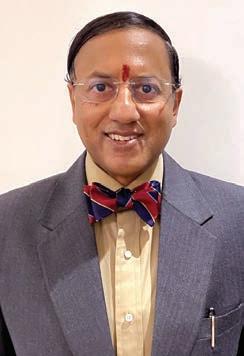
How is breast cancer diagnosed?
After evaluation by a process of Triple Assessment, which includes clinical breast examination, breast imaging (mammogram, i.e., X-ray of the breasts and breast ultrasound scan) and ultrasound guided core needle biopsy of the lump, a definitive diagnosis of breast cancer can be obtained in most instances.
Is Triple Assessment essential in the evaluation of every breast lump?
Yes. Triple Assessment (clinical breast examination, breast imaging and ideally ultrasound guided needle biopsy) accurately excludes or indeed confirms breast cancer in most circumstances, thus sparing the need for a woman to have open surgery to obtain a diagnosis.
What is the difference between stage and grade of cancer?
Diagnosis of breast cancer does not automatically mean that the disease has or will spread; just that it has the potential to spread. The potential for cancer to spread is referred to as grade of cancer. Breast cancer is graded 1, 2 or 3. In general, a lower grade (grade 1) indicates a slowly growing cancer while a higher grade (grade 3) indicates a faster-growing cancer.
The extent of the spread of cancer is known as the stage of the disease.
Stage 1 – Tumour less than 2 cms. No Spread
Stage 2 – Tumour 2– 5 cms with or without lymph node involvement. No spread to other parts of the body
Stage 3 –Tumour more than 5 cms or tumour any size but is fixed either to chest wall, muscle or skin
Stage 4 –Tumour any size, lymph nodes may or may not be involved, but cancer has spread to other parts of the body.
(Source: International Union Against Cancer – UICC)
Why is counselling important in breast cancer treatment?
Counselling is a very important component of breast cancer care as patients and their relatives are better informed, better prepared and more importantly, feel more in control at every stage of their treatment.
Counselling involves discussions about the diagnosis and various treatment options with a specialist in a sensitive and supportive environment. Additionally, counselling sessions provide adequate psychological and emotional support that takes care of the individual needs of patients and their families affected by breast cancer.
What is the primary aim of treating the breast cancer?
To remove the cancerous area from the breast and any affected lymph nodes in the armpit
To destroy any cancerous cells that might have already spread from the breast through the blood steam or the lymphatic system to other parts of the body
What are the modalities available for treating breast cancer?
There are essentially five modalities to treat breast cancer:
Surgery
Chemotherapy
Radiotherapy
Hormone therapy
Targetted therapy
Treatment is a personalised one and the multidisciplinary treating team decides the best treatment strategy for every patient.


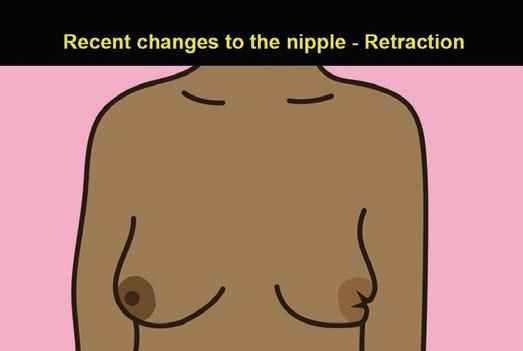
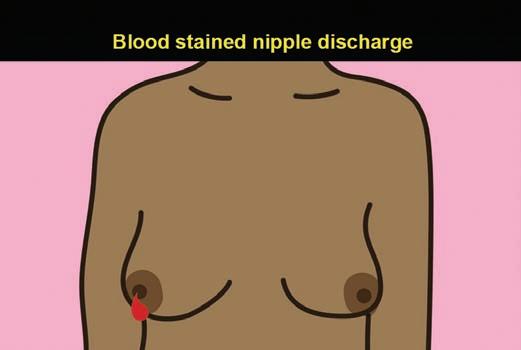

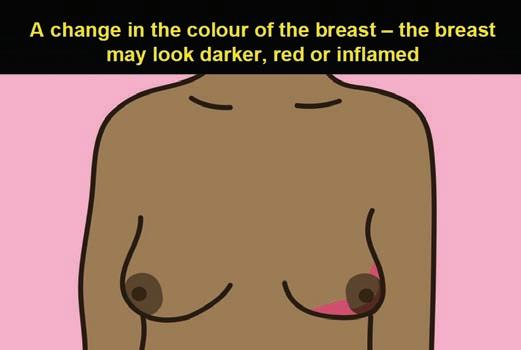
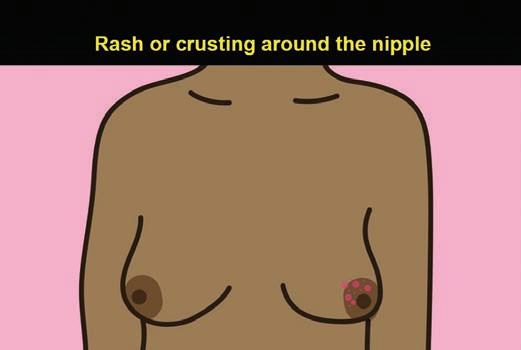
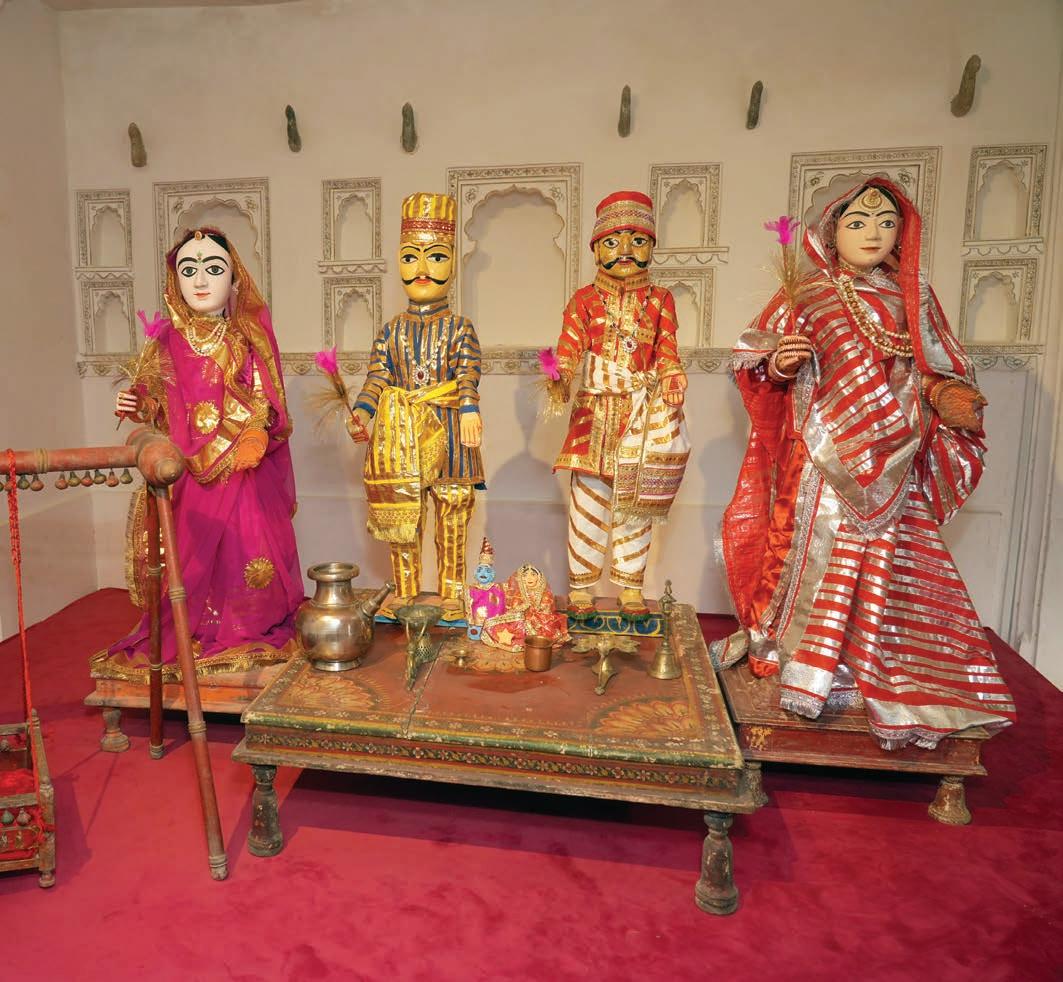
Mallik Thatipalli visits Udaipur to write about a new and exciting exhibition mounted by royals, called ‘Life in a Zenana’ currently on display at the City Palace Museum. This exhibition demolishes the myth that the royal ladies led cloistered lives. For these unsung heroines of Mewar played a key and crucial part in the administration and culture of the state.
Photographs Courtesy: City Palace Udaipur
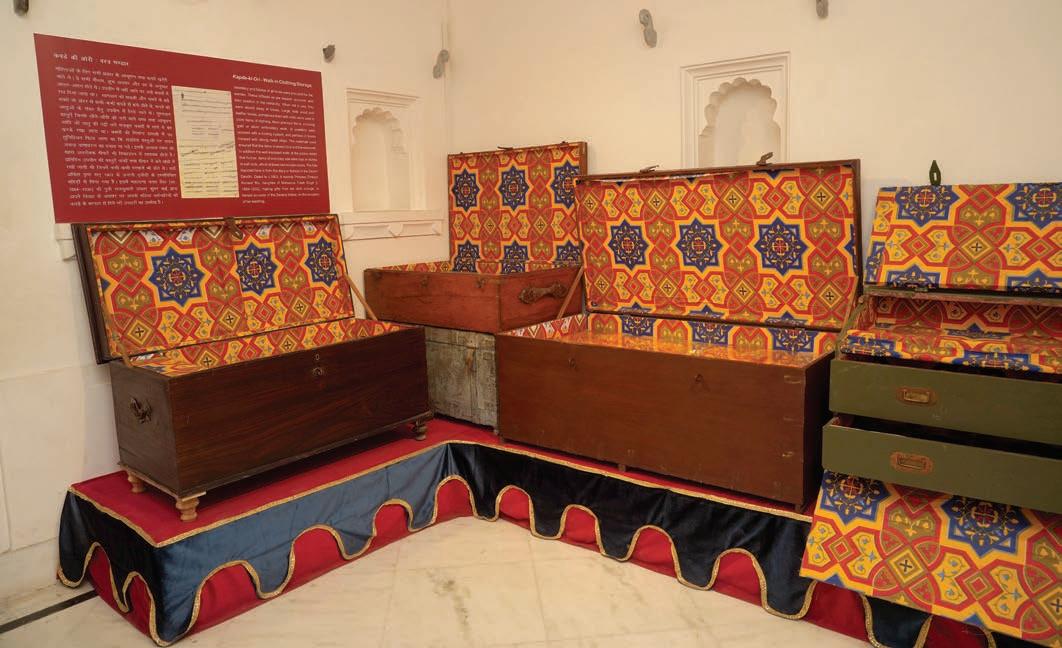
How did women in royal families live? What did their quarters look like and what did they do with their time?
The lives of royal men have been extensively documented, yet little is known about the women who lived behind the veil in royal households. This lack of documentation makes the recent exhibition at the City Palace Museum in Udaipur, titled ‘Life in Zenana,’ especially compelling.
The exhibition delves into the lives of these women—wives, mothers, daughters, and sisters to kings— shedding light on how they lived, their quarters, and how they spent their time.
Spread across the picturesque Zenana Mahal, the exhibition pays homage to the unsung heroines of Mewar: the royal ladies who not only lived within these quarters but also ruled, influenced, and contributed to the state’s cultural and administrative legacy.
Curated over four years, this first-ofits-kind, 1,600-sq ft showcase invites
visitors to step into the private world of these women, and unveils their pivotal roles in history.
The stories within
The Zenana Mahal (Palace for the Royal Ladies) has always sparked curiosity since men were traditionally forbidden from entering it. The information about the activities of the women within the Zenana Mahal has been limited until now.
But the exhibition ‘Life in Zenana’ now presents a more complete picture of Mewar’s history by highlighting the courageous and legendary stories of the royal women, their dedication to state administration, and their role in initiating public welfare projects.
In a conversation with Pink, Dr Lakshyaraj Singh Mewar of Udaipur, managing trustee of the Maharana of Mewar Charitable Foundation, says, “Life in Zenana marks yet another milestone in the ongoing development of our museum, which I am proud to say is being acknowledged as one of the
most vibrant and happening cultural institutions. It has brought together some of the finest professionals, who are able to give the museum the benefit of their experience to curate and present this exhibitiom.”
The exhibition’s essence lies in challenging the conventional perception of royal women as ‘faceless and voiceless’.
It emphasises the significant contributions of Mewar’s royal women to administration, citybuilding, and public welfare projects and seeks to correct centuriesold misconceptions
Envisioned in 2020 during the pandemic, the exhibition’s theme delves into the previously untold stories of Mewar’s royal women.
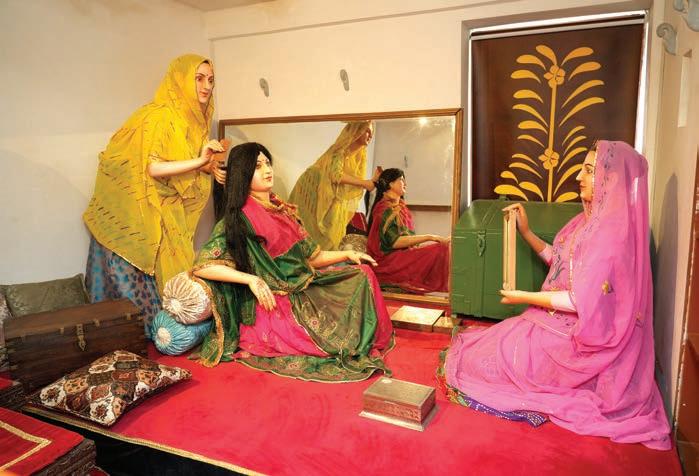
Through meticulous planning and research, it brings to life a significant yet overlooked chapter of history.
The exhibits offer visitors a glimpse into the activities of the royal ladies of the House of Mewar, including their daily routines, religious practices, how they adorned themselves, their ornamentation, their forms of entertainment, and courtly engagements. Interestingly, it also showcases arms and armors belonging to the women, which clearly shows that they received training to fight on the battlefield.
The visitors are also given a glimpse into their personal quarters, including their living spaces, religious rooms, and public areas, which proves that they led multi-faceted lives.
Defying stereotypes, the exhibition celebrates the valour of the royal ladies through the rare displays of their arms and armors from the 18th and 19th centuries, a poignant testimony to their readiness for battle
Visitors are welcomed into the exhibition by a striking life-size female mannequin dressed in traditional Rajput Poshak. She represents the messenger who once stood at the Zenana Mahal’s entrance.
This evocative figure sets the tone for the journey, seamlessly bridging the past with the present.
One room, designed as a temple, is dedicated to Chauth Mata, the local deity. Artefacts such as wooden Gangaur idols, a cradle for baby Krishna, and metal utensils speak of their spiritual devotion and practices.
The Shringar Kaksh, or adornment room, features a captivating diorama that highlights the beauty rituals of royal ladies. It showcases exquisite items such as antique jewellry boxes, vintage hot water dispensers, and perfume bottles adorned with ornate silver lids.
The Queen’s Durbar, a mirrored space inspired by the interiors of Badal Mahal, reimagines how the erstwhile Maharanis presided over courtly affairs, seated in an ornate pavilion surrounded by elegant floor-seating arrangements for noblewomen.
Defying stereotypes, the exhibition celebrates the valour of the royal
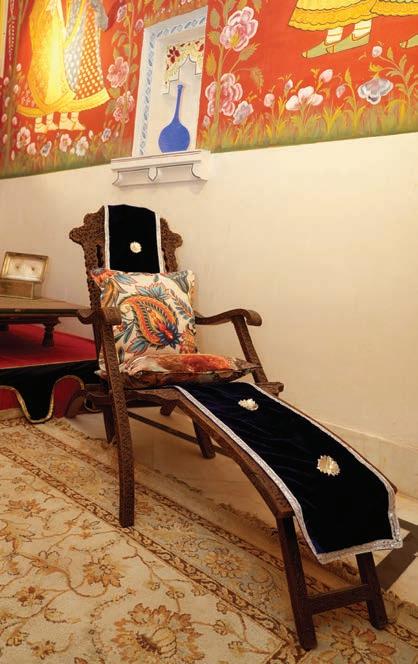
‘Life in Zenana’ incorporates a diverse array of artefacts from the City Palace Museum’s treasury
ladies through the rare displays of their arms and armors from the 18th and 19th centuries, a poignant testimony to their readiness for battle.
Behind the scenes
Curating this exhibition was no small feat.
“The most challenging part was to convey accurate information about the utility of each room, based on evidences and references from different sources,” shares Dr Hansmukh Seth, associate curator of the museum. The researchers relied on various resources, including studying wall paintings from the Mewar School, hand-written Zenani Deodhi records detailing daily expenditures, and oral histories from the Associates of Mewar.
The exhibition’s design draws heavily from architectural drawings in the archival map collection. Each room’s purpose has been thoughtfully reimagined based on historical data, adding a layer of authenticity to the narratives. This meticulous attention
to detail ensures that the exhibition not only tells a story but immerses visitors in the rich lives of Mewar’s royal women.
While ‘Life in Zenana’ isn’t rooted in a single collection, it incorporates a diverse array of artefacts from the City Palace Museum’s treasury.
Visitors can marvel at exquisite wooden Gangaur idols dating back 200 years, vintage furniture featuring intricately carved teakwood storage boxes, traditional indoor games such as Chaupar and Ganjifa cards, as well as a vintage hot water dispenser. These carefully curated objects not only depict the lifestyles of the royal ladies but also provide insights into their multi-faceted roles as administrators, warriors, and homemakers.
The exhibition’s essence lies in challenging the conventional perception of royal women as ‘faceless and voiceless’. Lakshyaraj Singh Mewar observes, “For far too long, there have been stereotypes which have defined the former Princely States of India. Now we, at The City Palace Museum, Udaipur, are undoing these historical narratives and presenting the heritage of our land, the true status and role of the royal ladies of Mewar.”
Envisioned in 2020 during the pandemic, the exhibition’s theme delves into the previously untold stories of Mewar’s royal women. Through meticulous planning and research, it brings to life a significant yet overlooked chapter of history
The evolution of the Zenana Mahal’s architecture mirrors the socio-political shifts of the 17th century. Initially, located adjacent to Badi Pol in 1559, the Zenana Mahal moved to its
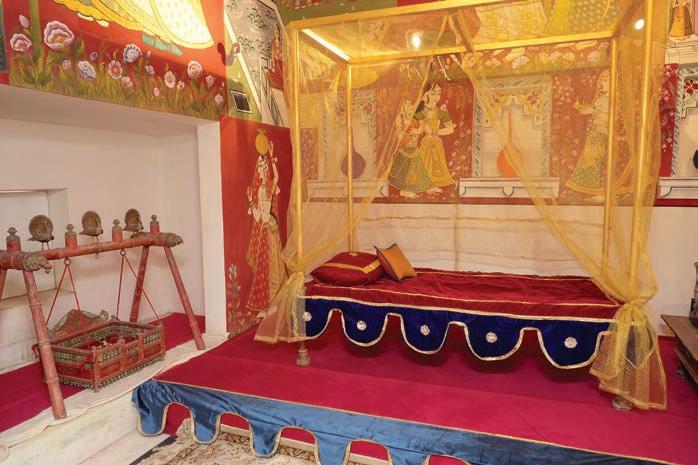
One room displays an intricately designed bedroom or Shayan Kaksh, complete with bedding and wall murals recreated based on references from Mewar paintings
current location on the first floor in 1620, for the purpose of enhancing privacy and security.
As the purdah system became more entrenched, public and private spaces were seamlessly demarcated within the Zenana. This historical context is woven into the exhibition’s narrative, illustrating how the Zenana’s design adapted to the changing times.
As the visitors walk through the exhibition, they are transported to an era where the Zenana Mahal was not just a secluded space but a vibrant hub of activity. The rooms reveal the day-to-day lives of the women who inhabited them—their artistic pursuits, religious ceremonies, and leisure activities.
One particularly striking room displays an intricately designed bedroom or Shayan Kaksh, complete with bedding and wall murals recreated based on references from Mewar paintings. Every detail, from the design of the furniture to the arrangement of artefacts, has been meticulously planned to ensure historical accuracy.
In addition to the physical exhibition, the curators have incorporated storytelling elements to bring the Zenana Mahal to life. These narratives, drawn from oral histories
and archival materials, shed more light on the lesser-known contributions of the women. They played key roles in managing the palace’s vast estates, engaging in diplomatic efforts, and supporting cultural initiatives as well.
The ‘Life in Zenana’ exhibition also delves into the evolution of the Zenana Mahal over a 300-year period.
It focuses on the architectural and cultural shifts that unfolded as the Zenana adapted to changing times. The inclusion of detailed timelines and visual aids helps visitors understand the broader historical context, making the exhibition both educational and immersive.
Beyond its historical significance, the exhibition serves as a celebration of the enduring legacy of Mewar’s royal ladies.
The exhibition is a reminder that history is not just about kings and battles but also about the lives of women who navigated complex social and political landscapes with grace and determination.
– a remarkable feat achieved in 24 hours!
A lesson on breast cancer awareness
It was a unique and commendable initiative to honour the memory of Dr Raghu Ram’s mother, the courageous Dr Ushalakshmi.
To mark the 50th anniversary of International Women’s Day, the Hyderabad-based Ushalakshmi Breast Cancer Foundation and KIMS-USHALAKSHMI Centre for Breast Diseases at KIMS Hospitals, in collaboration with the spiritual organisation, the Brahma Kumaris, crossed yet another significant milestone by securing two new Guinness World Records. This underscores their unwavering commitment to breast cancer awareness and women’s empowerment.
The first Guinness World Record was achieved for conducting the ‘Largest breast cancer awareness lesson’, with a recordbreaking participation of 5,020 people on March 8, 2025.
The second Guinness World Record was for the ‘Most views for a breast cancer awareness lesson on YouTube in 24 hours’. Impressively, 6,218 people viewed the session online between March 8 and March 9, 2025.
The awareness lesson was conducted by Dr P Raghu Ram. Over the course of 24 hours, this innovative breast cancer advocacy campaign reached and benefitted over 11,000 individuals from India and abroad, both at the in-person venue and through online participation.
What was the purpose of this large-scale initiative?
• To empower women about the importance of early detection
• Demystify the common myths associated with breast cancer backed with evidence-based facts
• Emphasise the importance of annual screening mammograms for women over 40 years
• Provide the much-needed inner strength to those fighting the disease
Large-scale initiatives like this are a powerful way to bring attention to critical health issues such as breast cancer, which is indeed a pressing concern for women in India and globally. Rishi Nath, the adjudicator for both Guinness World Records, praised Dr Raghu Ram for his lucid and impactful 40-minute presentation delivered in both Hindi and English.

Former Vice-President of India, Venkaiah Naidu
Accolades pour in
Former Vice-President of India, Venkaiah Naidu, the Chief Guest at the Guinness World Record Presentation ceremony hailed Dr Raghu Ram’s achievement and congratulated him.
“Heartiest Congratulations Dr Raghu Ram, a renowned surgeon and a Padma Shri awardee for achieving a record as renowned as the Guinness Book of World Records, for empowering over 11,000 people within 24 hours on the landmark 50th anniversary of International Women’s Day, both at an in-person venue in Brahma Kumaris World Head Quarters and online through YouTube.”
“This feat is also a jewel in the crown of Ushalakshmi Breast Cancer Foundation and KIMS-USHALAKSHMI Centre for Breast Diseases at KIMS Hospitals, as also for Brahma Kumaris. With 200,000 new cases being diagnosed every year and 100,000 deaths per annum, for every two women diagnosed with breast cancer, one succumbs to this dreaded disease in India.”
“Dr Raghu Ram has been championing an inspiring breast cancer advocacy campaign in the Telugu States for the past many years. He has been driving an awareness campaign on the importance of early detection of breast cancer through a number of innovative initiatives. Many of his initiatives, including a large-scale, population-based breast cancer screening programme, spread across 4,000 villages in

both Telugu states has paved the path for early detection, translating to saving scores of lives in the region.”
“I commend Dr Raghu Ram for his pioneering work both as a surgeon dedicated to management of breast cancer and other non-cancer breast health issues in addition to spearheading several landmark initiatives that have transformed breast cancer care in India. “
Tweet from the former Vice-President of India: The Brahma Kumaris
Reflecting on this, Rajyogi Dr B K Mrutyunjaya, additional secretary general for Brahma Kumaris said, “Brahma Kumaris is privileged to collaborate with Dr Raghu Ram and looks forward to his invaluable guidance in ensuring that all women over 40 years at our Brahma Kumaris Centres receive annual screening mammograms, which will undoubtedly save many lives through early detection.”
Rajyogini BK Kuldeep head of the Brahma Kumaris Hyderabad subzone, shared her heartfelt gratitude, saying, “I feel blessed to have been treated by Dr Raghu Ram. His exceptional counselling, extraordinary surgical skills, and meticulous post-operative care have helped me become a breast cancer conqueror. On behalf of the entire Brahma Kumaris community, my sincere thanks to him for leaving no stone unturned to ensure that the world’s largest breast cancer awareness lesson benefits countless women globally.”

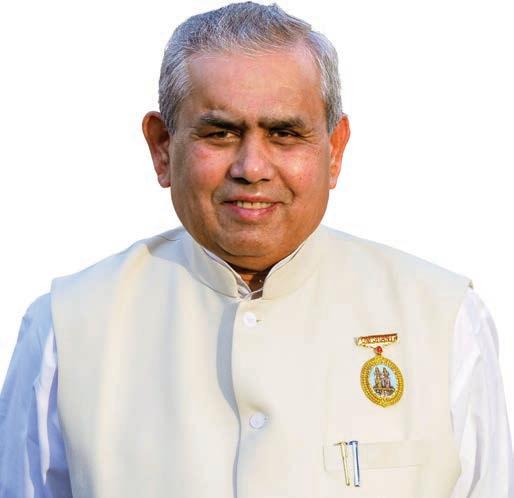
Rajayogi Dr BK Mrutyunjaya
The KIMS Group of Hospitals
Praising Dr Raghu Ram for the spectacular achievement, Dr B Bhaskar Rao, chairman, KIMS Group of Hospitals said,
“I commend Dr Raghu Ram for achieving yet another milestone in his career that he pursues with passion and single-minded devotion. Whatever goals he sets for himself, he achieves them with 100 per cent success rate.
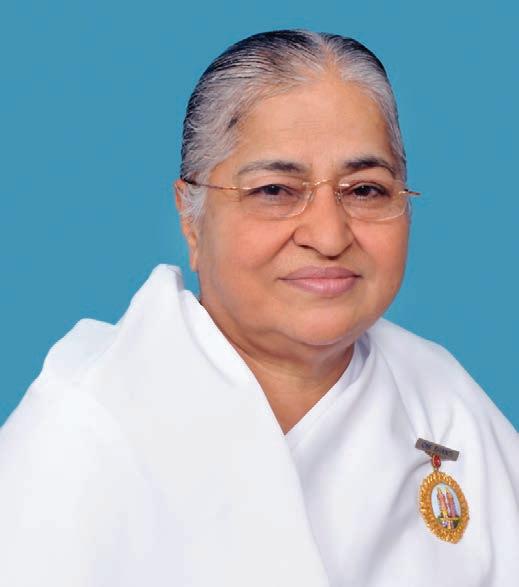
I can vouch for this fact! As we celebrate the 50th anniversary of International Women’s Day 2025, let’s not forget that a woman is at the nerve centre of the family. If she is well, the family will be well. It is the duty of all men to ensure that their near and dear get an annual screening mammogram from the age of 40.”
Rich tribute
In celebrating Dr Raghu Ram’s remarkable achievement,
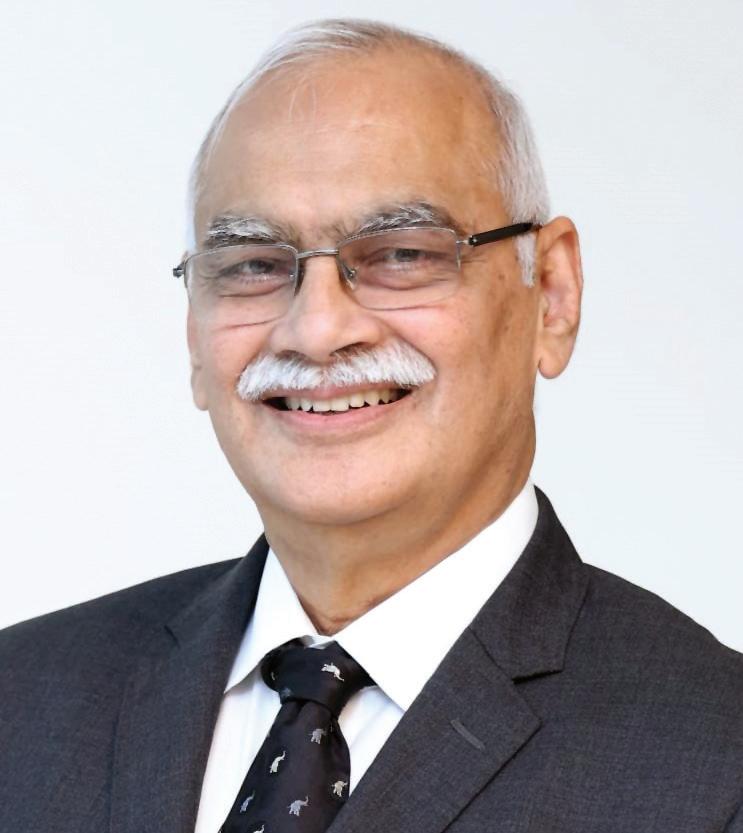

Padma Bhushan awardee and chairman of the Administrative Staff College of India, K Padmanabhaiah, offered a heartfelt tribute: “I have admired Raghu deeply over the past 15 years. His unwavering love for his mother and motherland brought him back to India, where he has been working with missionary zeal for the past 18 years to transform breast cancer care through countless innovative initiatives. I extend my best wishes to him and anticipate many more milestones in his tireless service to the nation.”
His words encapsulate the profound impact and dedication Dr Raghu Ram has demonstrated to promote healthcare and empower communities.
1. Link to Guinness World Records website: Guinness World Record 1 Guinness World Record 2
2. Link to the Presentation delivered at Brahma Kumaris World Headquarters, 8 March 2025
3. Link to the Presentation premiered on YouTube, 8 March 2025
4. Link to the Concluding Remarks, which gives a bird’s eye view of the impact created by the Awareness Lesson
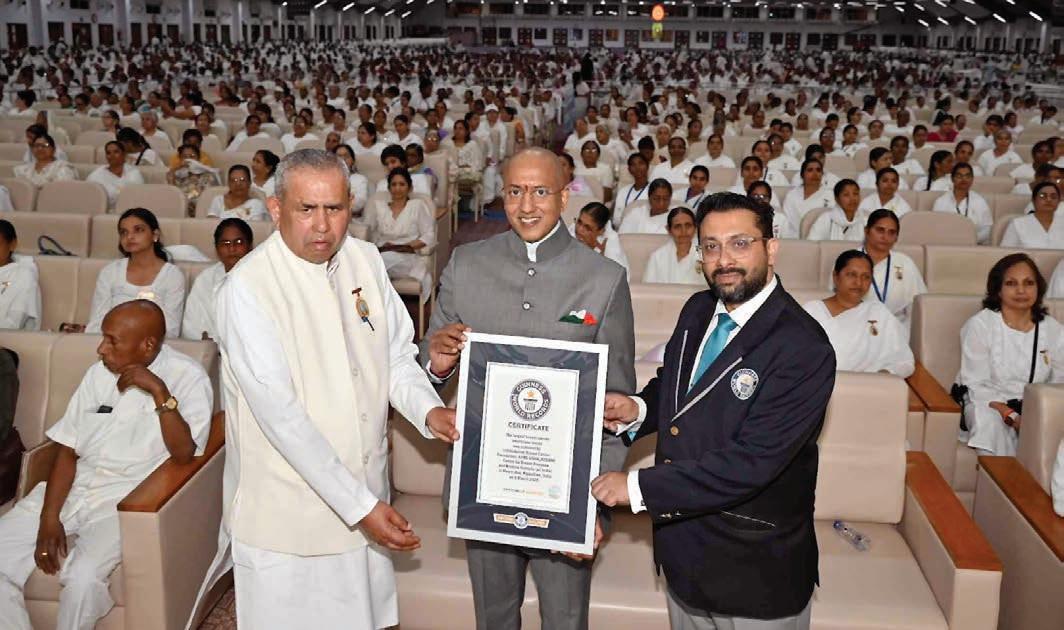
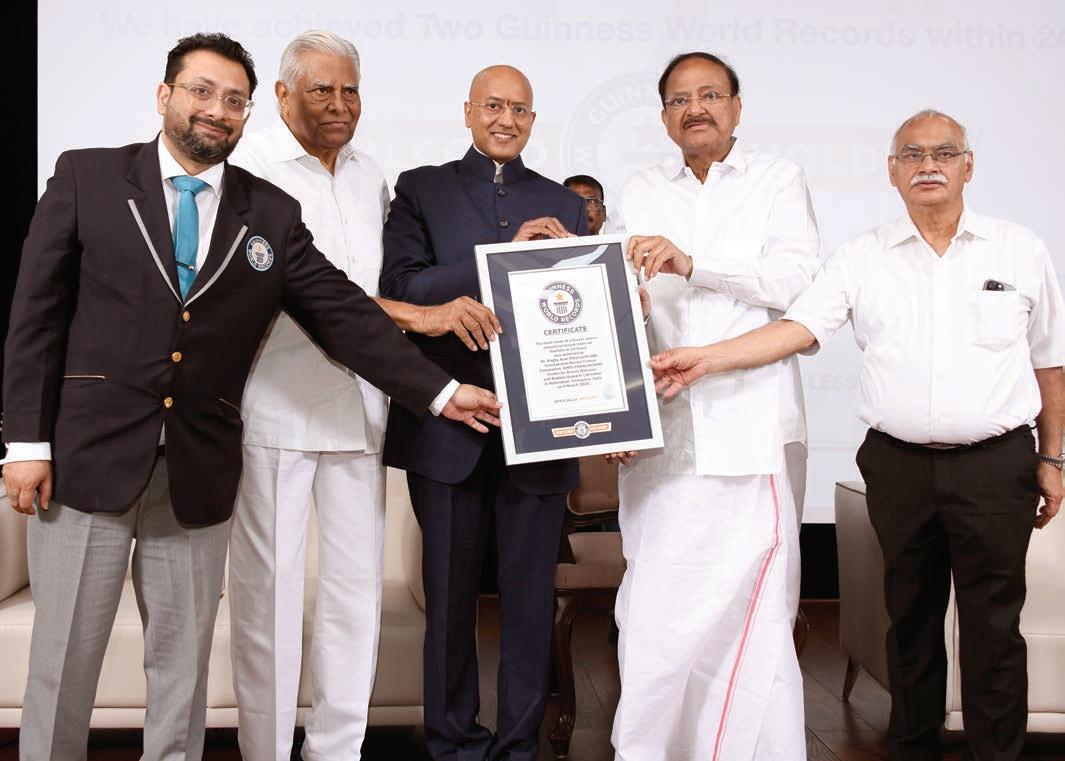
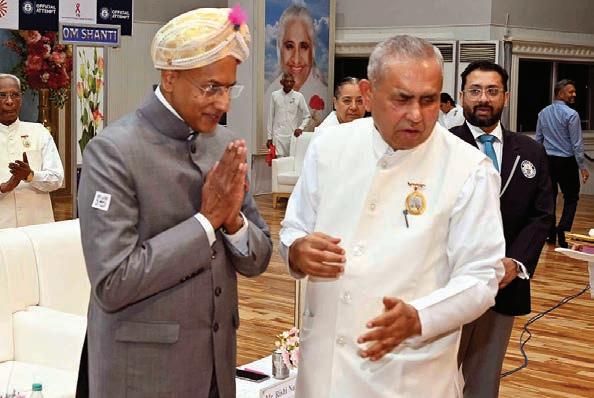
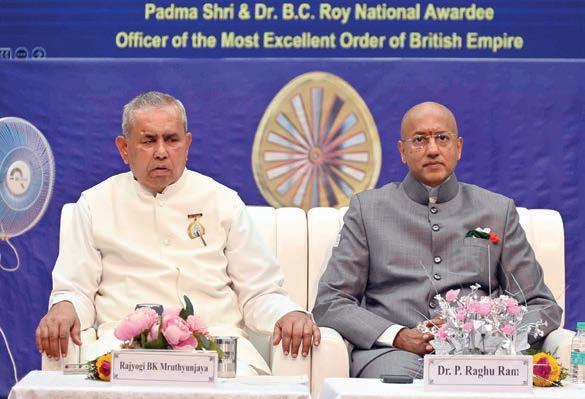
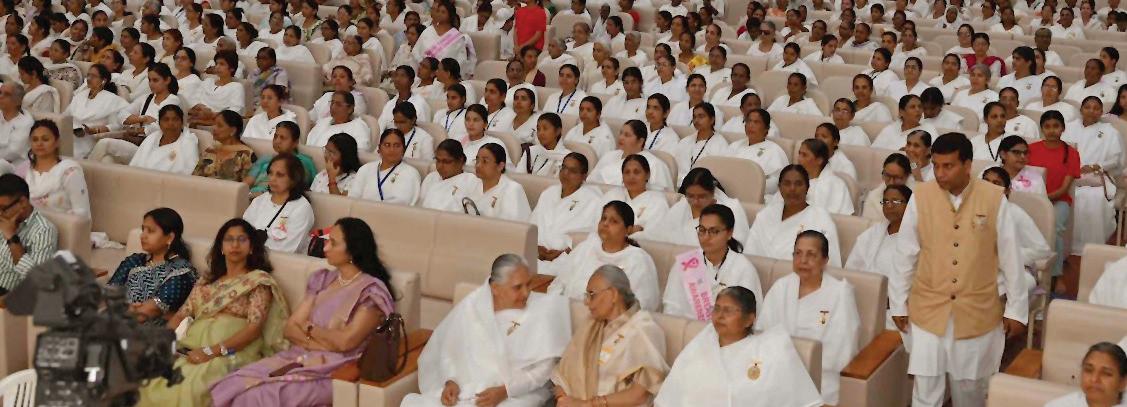


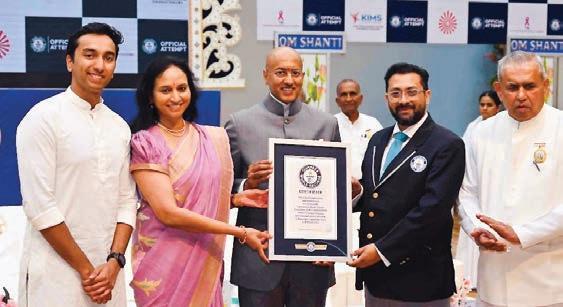
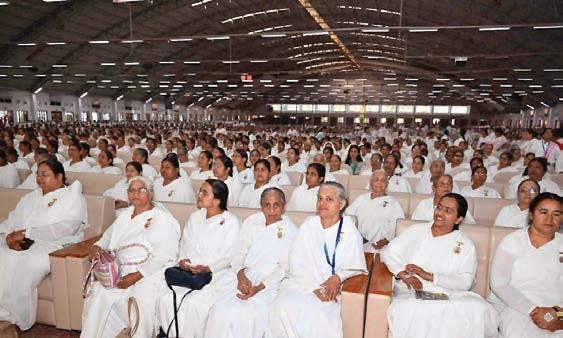
Guinness World Record 2
‘Most Views of a Breast Cancer Awareness Lesson Video on Youtube in 24 hours’
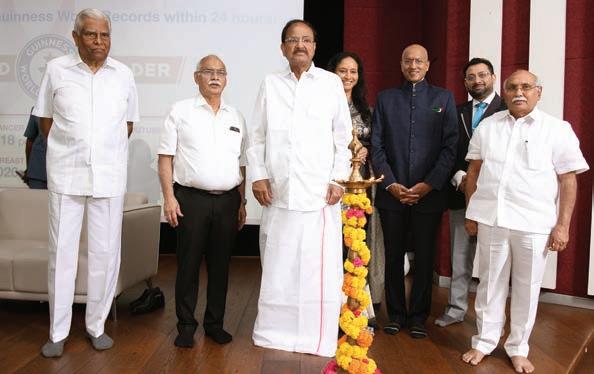
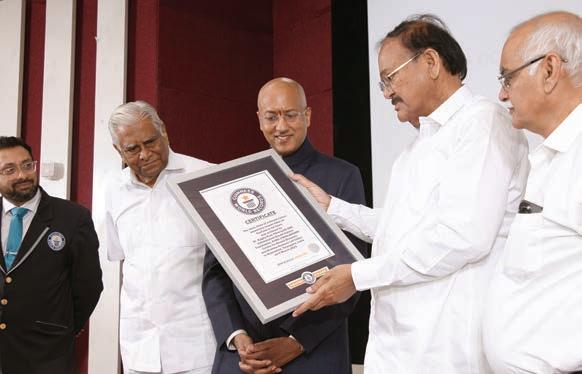
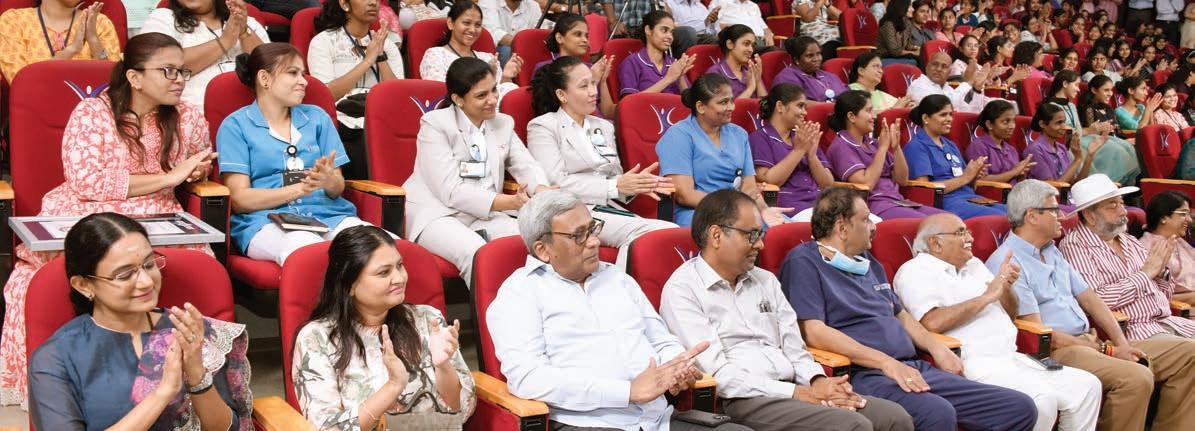

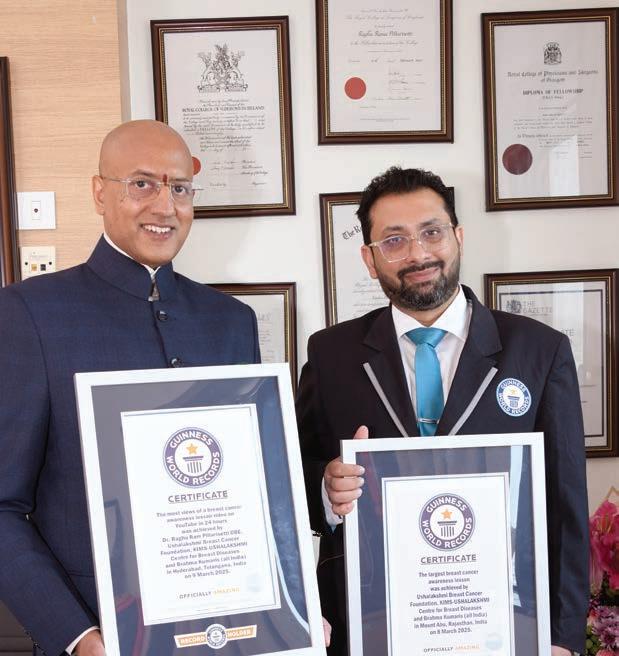
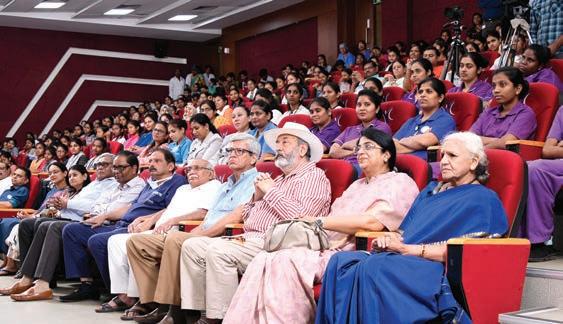


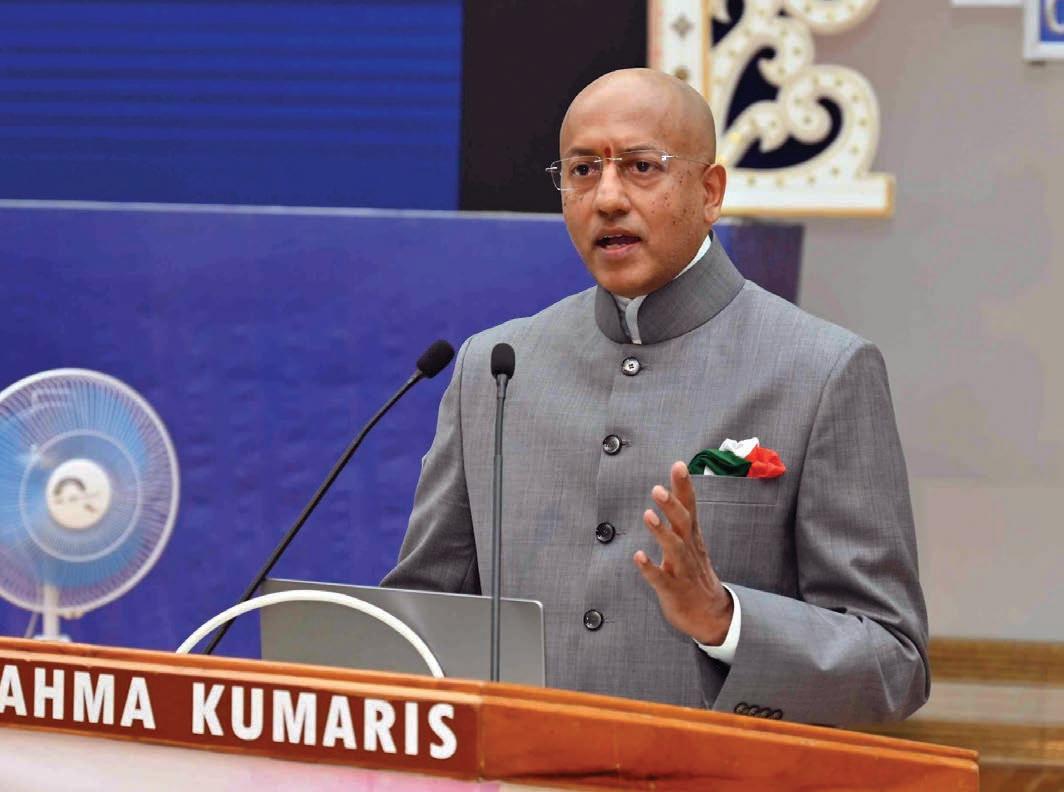
Ushalakshmi Breast Cancer Foundation
Hyderabad, India
Empowering people...impacting lives

